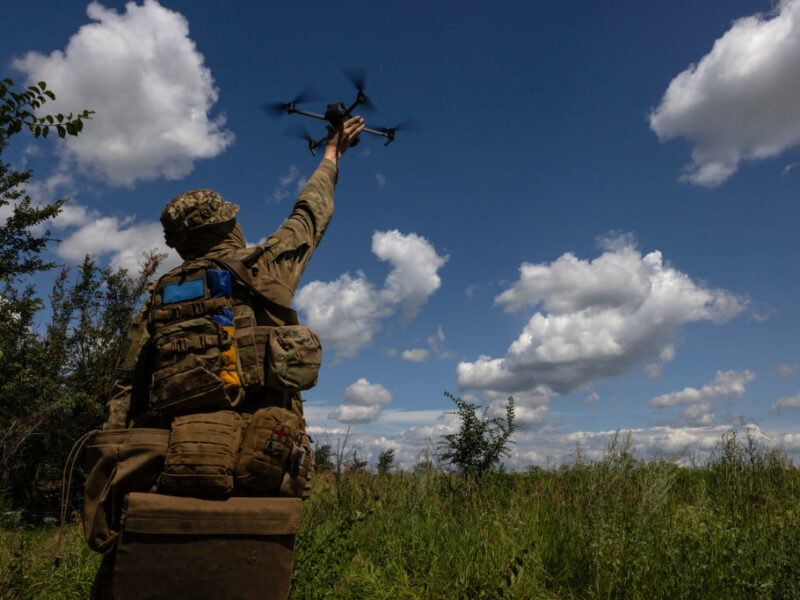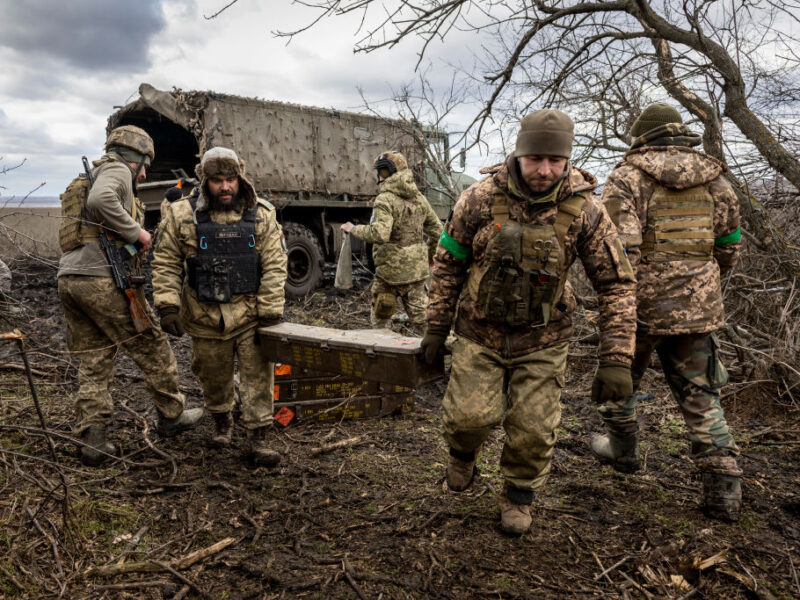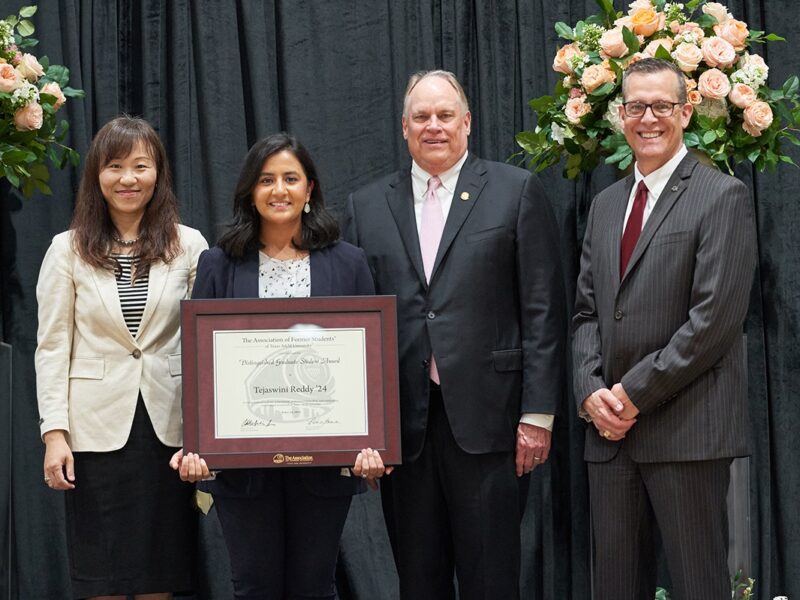Cadets Given Opportunities To Hone Skills – Here And Abroad
 On land, sea and in the air, members of Texas A&M University’s Corps of Cadets are honing their leadership, language and cultural skills — on campus, around the U.S. and even abroad.
On land, sea and in the air, members of Texas A&M University’s Corps of Cadets are honing their leadership, language and cultural skills — on campus, around the U.S. and even abroad.
When not focusing on their basic academic pursuits, many Texas A&M cadets are presented a variety of challenges and opportunities — some of which have taken them as far away as Korea, the Philippines and the Middle East.
If asked how they spent their summer vacation, the Army, Air Force, Navy and Marine Corps Reserve Officer Training Corps (ROTC) cadets can answer by saying they had specialized training that included ship operations, military tactics, flight training, parachuting and physical fitness. Then there is the training they received in leadership, cultures and languages. These highly specialized areas are in demand because of an increasing need for the nation’s military to be well-rounded and culturally prepared when deployed around the world, emphasizes Col. Kenneth Allison, professor of aerospace science.
Texas A&M’s Corps of Cadets, which began the new academic year with more than 2,300 members in its ranks — the highest level in 30 years — is open to young men and women on a strictly voluntary basis. Many of the cadets who choose to be in the corps are not planning military careers, but like its camaraderie aspects and the opportunities to develop leadership and related skills.
This past summer, various cadets participated in Texas A&M’s Project Global Officer, or “Project GO,” a collaborative program that promotes critical language education, study-abroad and provides intercultural dialogue opportunities for ROTC students.
Project GO programs focus exclusively on the languages and countries of the Middle East, Asia, Central Asia and Africa. It is a Department of Defense scholarship program designed for cadets and midshipmen who are contracted, or those who intend to contract with an ROTC unit. ROTC students may use the scholarship funding for faculty-led programs abroad or individual enrollment in critical language programs, such as Chinese, Russian and Arabic.
A group of Texas A&M Air Force ROTC (AFROTC) cadets graduated from AFROTC field training programs and three Aggie cadets received “Top Gun” honors in their training flight. This training is built around the Air and Space Expeditionary Force (AEF) concept to “develop quality leaders for the United States Air Force.” It is designed to evaluate cadets’ military leadership and discipline. Field training places cadets in an austere, deployment-like environment to allow them to hone their leadership skills and prepares them for the challenges of duty as an officer.
Cadets typically attend the four-week field training, first at Maxwell AFB, Montgomery, Ala. before heading to Camp Shelby Joint Forces Training Center near Hattiesburg, Miss. Here the Aggies learned basic combat skills, familiarization training such as logistic readiness, convoy operations, weapons training and military operations in urban terrain.
Other cadets attended Navy/Marine Corps midshipmen training, which includes one week each with ships in the surface fleet and submarine fleet, as well as training with Navy aviation and Marines. During surface week, the Aggies participated in activities onboard several U.S. warships, U.S. submarines and in helicopters or jets. Many cadets participated in shipboard operations and had the opportunity to visit ports throughout the Atlantic and Pacific theaters.
Marine Corps week is spent on USMC bases on the east and west coasts where the students had an opportunity to learn about the Marine Corps and become familiar with weapons systems including live firing. In addition, the cadets visited Marine Corps aviation and artillery units in order to gain a better understanding of the Marine Air Ground Task force (MAGTF).
Another group of cadets who aspire to become Marine officers attended Officer Candidate School in Quantico, Va. This rigorous program is designed to evaluate the mental, physical and leadership abilities of the officer candidates and the successful completion of this training is required in order to receive a Marine Corps commission.
Aggie Army cadets participated in a wide variety of activities that took some of them to locations outside the continental United States.
Those who attended the U.S. Army Air Assault School’s 10-day course of instruction did so at several locations, including Germany and Hawaii. They spent their time focusing on combat assault operations involving Army rotary-wing aircraft.
At the Airborne School, the cadets learned how to become paratroopers. This three-week course, also known as the Basic Airborne Course, teaches the techniques involved in parachuting from airplanes and landing safely.
The ROTC Leadership Development and Assessment Course (LDAC) is the most important training event for an Army ROTC cadet, according to Army officials. The 32-day course is designed to develop and evaluate leadership ability. The challenges are rigorous and demanding and provide a new perspective on an individual’s ability to perform challenging tasks and to make difficult decisions in demanding situations.
The course placed each cadet in a variety of leadership positions, many of which simulate stressful combat situations. In each position, cadets were evaluated by platoon tactical and counseling (TAC) officers and noncommissioned officers.
Eighteen Aggie cadets participated in the Cadet Troop Leadership Training Program (CTLT) where they also had an opportunity to increase their leadership experience. CTLT is conducted at many Army bases nationwide or in the Federal Republic of Germany or the Republic of Korea. The Aggies were placed in actual Army units where they were able to act as real-life lieutenants leading 30-plus soldiers and responsible for millions of dollars of equipment.
Other Aggie cadets received training to develop more cultural awareness and foreign language proficiency skills that included overseas immersions to help educate these future leaders in ways the classroom cannot. Cadets traveled in small groups led by senior leader cadre. The trips lasted approximately one month, which includes the deployment as well as a five-day soldier readiness process.
Those who lead Texas A&M’s Corps of Cadets say that the mission of the corps is to develop well-educated leaders of character who are academically successful, embody the values of honor, integrity, discipline and selfless service, and are fully prepared for the global challenges of leading in the 21st Century. So it’s not surprising that so many of them spent their summer vacation preparing to carry out that mission.
Media contact: Tura King, Texas A&M Division of Marketing & Communications.





